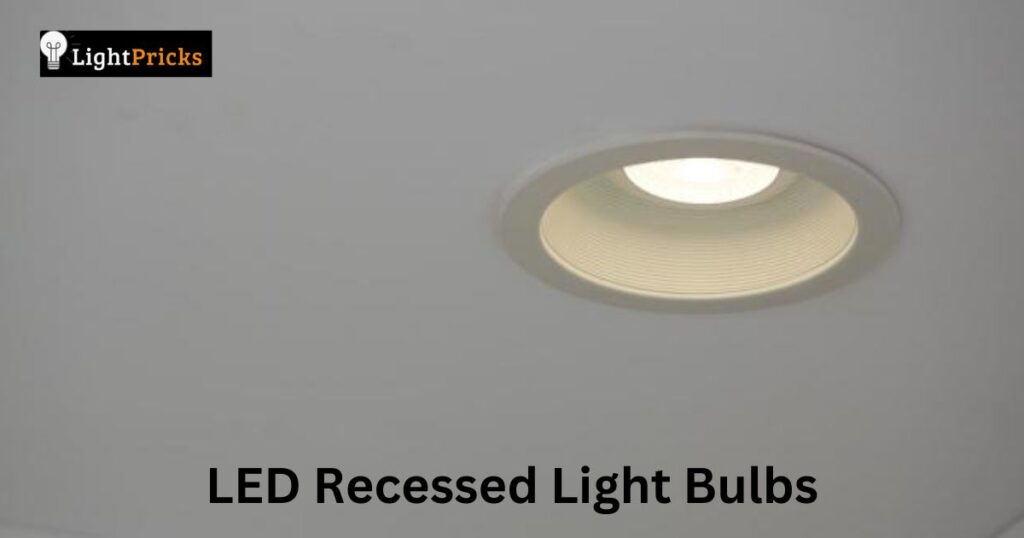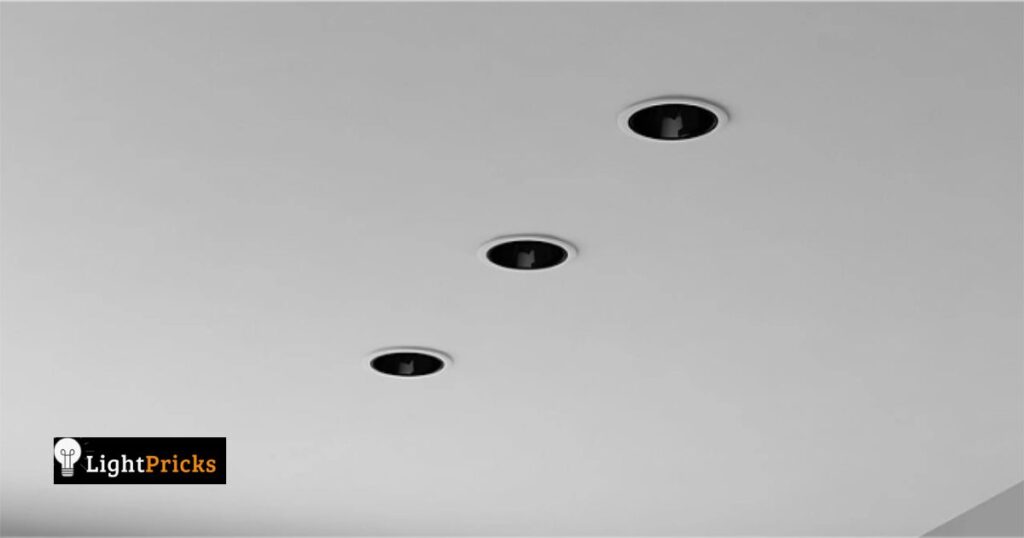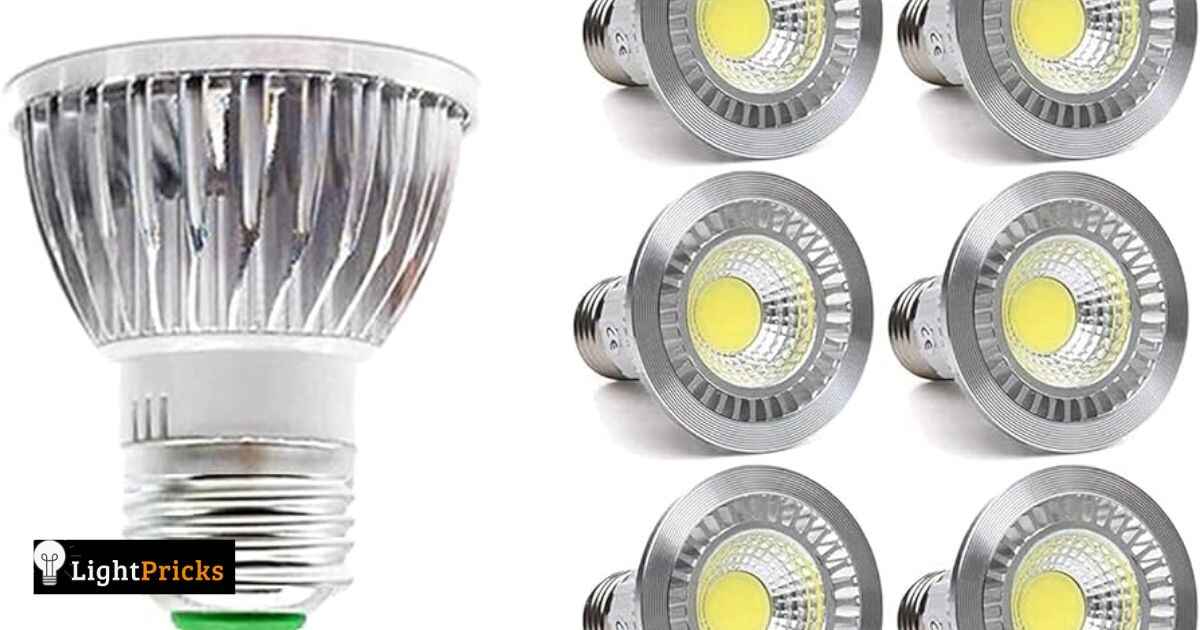LED recessed light bulbs offer a modern solution for lighting your home. They have LED, or light-emitting diode, bulbs housed inside recessed fixtures installed in ceilings. Unlike regular bulbs, LEDs do not have a hot filament but use semiconductors to create light. This makes them very efficient, long-lasting, and eco-friendly. LED bulbs can shine brightly for around 50,000 hours, which is years more than other types. They take little energy too, so will not push up electricity bills very much.
Having the right lighting sets the tone in a house. But old-fashioned bulbs waste power and money. Some boys may have noticed this at their own homes. LED recessed lights give clean, soft light without glare. Homeowners can pick different brightness levels and colour temperatures to suit work or relaxation. They make a house feel bright and cheery without high costs. What’s more, installation is simple for electricians during building work or later on by yourself.
What Are LED Recessed Light Bulbs?

LED recessed lights are a type of lighting fixture predominantly used in ceilings. They consist of a housing unit installed flush with the ceiling during construction. Inside the housing is an LED bulb serving as the light source. LED stands for “light emitting diode” – a semiconductor device that emits light when activated by electricity. Unlike traditional incandescent bulbs which use heated filaments to produce light,
LEDs use electroluminescence – the emission of light from a semiconductor due to the movement and recombination of electric charge carriers injected or generated by an electric field. This makes them significantly more energy-efficient while lasting much longer than standard bulbs.
The Main Benefits Of LED Recessed Lighting
Here are the following benefits of LED recessed lighting:
Energy Efficiency And Long Lifespan
LED bulbs consume up to 90% less energy than traditional incandescent lights. They are also 60-80% more efficient than compact fluorescent lamps (CFLs). Despite putting out the same or brighter light, LEDs use very little power which leads to significantly lower electricity bills. This makes them a cost-effective long-term investment for homeowners.
A single LED bulb can last up to 50,000 hours which is over 11 years of constant use based on standard daily schedules. This is drastically higher than typical bulb lifetimes of 750-1000 hours for incandescents and 6000-10,000 hours for CFLs. This longevity means reduced replacement costs and less wastage over time.
Directional Light Output And Durability
LEDs emit light in a focused beam rather than radiating it uniformly in all directions. This allows for more precise illumination where it is needed and less light spillage that creates glare. Their directional properties also enhance visual tasks by eliminating harsh shadows.
LEDs contain no filaments or glass enclosures to break like conventional bulbs. Their solid state construction makes them far more durable and resistant to vibrations. This durability minimizes repair and replacement needs.
Instant On/Off And Cool Operation
LEDs illuminate instantly when powered on without any delayed warm-up period. They can also be switched on and off many times without performance degradation. This makes them ideal for corridor, kitchen, bathroom and garage lighting applications that require frequent use.
LEDs produce very little heat as they convert most energy directly into light. Their cool operation means there is no fire hazard risk from overheating failures like certain old-fashioned lamps.
Dimmability And Color Options
Many LED lighting fixtures offer dimming capabilities by adjusting the power input to control light levels. This makes them better suited than non-dimmable bulbs for applications like general living room, bedroom and accent lighting that require bright or soft illumination depending on the setting.
LEDs are available in various correlated color temperatures (CCT) ranging from warm white to daylight which allow choosing the appropriate tone for different tasks or atmospheres. Options include soft white (2700K) for living rooms and bedrooms, bright white (5000-6000K) suited for kitchens and offices, and natural daylight (6500K) for creative work like art or photography.
Easy Installation And Upgrade
LED recessed lights seamlessly fit into ceiling designs during initial construction or retrofit existing lighting setups with minimal hassle. They provide a simple and effective way to bring homes up to speed with the latest energy-saving technologies. Installing new fixtures is also easier and faster than swapping traditional bulbs frequently. Some LED downlights also feature tool-less designs for one-step installation and replacement of light sources.
Types Of LED Recessed Lighting
There are different styles of LED recessed lights tailored for various residential architecture and application requirements:
1. Recessed Downlights
As their name suggests, these feature a canister design that is recessed into the ceiling cavity. They aim light directly downwards in a focused beam to light up tabletops, counters and other surfaces underneath. Common recessed downlight sizes are 4, 5 and 6 inches.
2. Recessed Trims/Housings
Similar to downlights, these consist of trim rings and open frameworks that get fitted on the ceiling opening around an integral or replaceable LED module. They offer more versatility than pre-built cans in adapting to imperfect ceiling cut-outs.
3. Recessed Wall Washers
Wall washers project illumination at a wider angle along walls rather than directly down. This makes them suited for accenting architectural details, lighting artwork or creating ambiance in large spaces.
4. Flush Mounts
Flush mounts resemble traditional light pendants but install directly flush to the ceiling using mounting brackets instead of chains or stems. They work great for hallway, foyer and bathroom lighting applications.
5. Panel Lights
Large pre-lit panel fixtures are ideal for evenly illuminating expansive areas like great rooms, kitchens and garages. Panels containing multiple dimmable LEDs fit between ceiling joists or wall studs.
Choosing the right type of LED recessed lights involves considering factors like the ceiling design, purpose of lighting space, need for directional/wide-angle output, installation access, and aesthetic preferences. Consulting an expert can help determine the most suitable fixtures.
Key factors When Selecting LED Recessed Lighting Fixtures

When shopping for LED recessed lights, several characteristics require examination to ensure a perfect solution:
- Lumen Output – The total light amount measured in lumens as rated by the manufacturer. Higher lumens provide brighter illumination for larger or darker spaces. Choose based on lighting needs and space size.
- Beam Angle – This refers to the width of the light spot or spread. Narrower angles like 15-30 degrees focus light directly below while wider 50-120 degree optics distribute it more widely on surfaces and the room.
- Color Temperature – Available in warm to cool temperature ranges from 2700K-6500K as discussed earlier to suit task and atmosphere requirements. Consider how light will impact colors, mood, and visual tasks.
- Housing Material – Commercial grade aluminum housings recommended for durability. Avoid plastic that can discolor or become brittle with heat fluctuations over time. Glass diffusers are also fragile.
- Finish – Choose appropriate surface finish like matte white for ceilings, bronze or black for aesthetic and color-matching needs based on interior décor style.
- Installation Type – New construction flush-mounts versus retrofit trims which require accessible junction boxes and attic/floor access during upgrade projects. Retrofits may need rewiring.
- Controls – Choose fixtures compatible with smart home systems and offering features like dimming, app control, motion sensors based on convenience needs. Pay attention to included remote controls.
- Energy Use/Lifespan – Compare lumen maintenance, rated lifespan of 50,000+ hours and maximum 1.5 watts energy use per fixture unless very high lumen applications. Look for Energy Star certification.
- Mounting – Surface, recessed, or ceiling types available. Recessed needs accessible cavities during installation – confirm cavity size specifications match fixture dimensions before choosing.
- Price – Cost will vary with lumen output, brand, features, and retail location. Balance investment with longevity, efficiency and quality for better long-term value and lowest operational costs.After carefully weighing these specifications and intended usage factors, homeowners will have an informed decision to select the ideal LED recessed lights for their requirements. Reputable suppliers and electricians can be consulted if further assistance is needed.
Common Applications Of LED Recessed Lighting
LED recessed lights can be used in many different rooms inside the home. Some places people often put them are the kitchen, living room, bathroom and office. In the kitchen they provide bright light over counters and cabinets so you can see well while cooking or cleaning. Living rooms use softer warm lights for relaxing.
Bathrooms need lights by the mirror so you can get ready, and offices want bright cool lights for working at desks. Other places are laundry rooms, hallways on stairs, bedrooms, basements, and even outside near doors. LED recessed bulbs come in types for each job and make hard or soft light wherever it is needed in the house.
Final Thoughts
LED recessed lights provide a smart lighting solution for modern homes. They save significant amounts of energy compared to other bulbs and can last over a decade with proper use. From task zones in the kitchen to ambiance in living areas, LED downlights suit diverse residential applications.
Their quality installation, customized options and long-term cost savings make LED recessed lights a worthwhile upgrade for whole-home illumination. Combining form and function seamlessly, these fixtures light the way to comfortable, efficient living for years to come.













